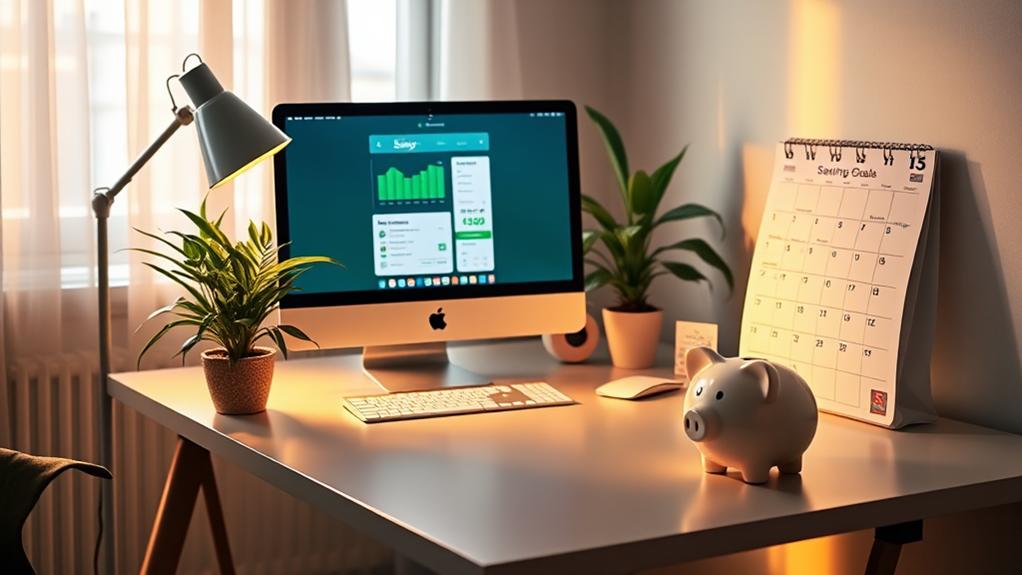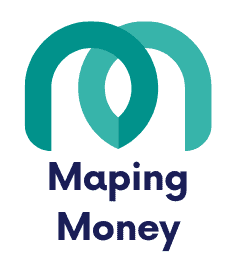5 Essential Tips for Saving Money When Buying a House
To save money when buying a house, start by setting clear savings goals. Know your down payment target and create a timeline to achieve it. Tighten your spending by cutting non-essential expenses, like dining out or cable. Boost your income through side hustles or part-time jobs. Don't overlook assistance programs; investigate options like FHA or USDA loans that may reduce your upfront costs. Finally, automate your savings with regular transfers to a dedicated account, ensuring you stay on track. Each of these strategies can considerably enhance your financial readiness, and more helpful insights await as you explore further.
Key Takeaways
- Set clear savings goals by determining a specific down payment amount and breaking it down into manageable monthly targets.
- Tighten your spending by eliminating non-essential expenses like gym memberships, dining out, and cable services to increase your savings.
- Explore additional income opportunities through side hustles, freelance work, or renting spare rooms to boost your home savings fund.
- Research down payment assistance programs, such as FHA, USDA, or VA loans, to find options that may reduce upfront costs.
- Automate your savings by setting up automatic transfers to a dedicated savings account for consistent and effortless contributions.
Set Clear Savings Goals

When it comes to buying a house, having clear savings goals is essential. Start by establishing a specific dollar amount for your down payment, typically between 3% and 20% of the home purchase price. This creates a tangible savings target. Next, set a timeline for achieving this savings goal—perhaps two years. This structured approach will enhance your financial planning.
Break down your larger savings goal into manageable monthly targets. For instance, if you aim to save $40,000 for a down payment in two years, you'd need to save about $1,700 each month. Don't forget to budget for additional costs like closing costs, which average 3-6% of the home's purchase price, and moving expenses that can range considerably.
To streamline your efforts, utilize a dedicated savings account, such as a money market account. This keeps your down payment funds separate and accessible, allowing you to track progress easily. By setting clear savings goals and maintaining a disciplined approach, you'll be on your way to homeownership, minimizing stress and maximizing your financial freedom when it comes time to secure your mortgage.
Tighten Your Spending

Tightening your spending is a strategic move that can greatly accelerate your path to homeownership. By making conscious choices about where your money goes each month, you can save for a house more effectively. Redirecting funds from everyday expenses can profoundly boost your down payment savings.
Here's a breakdown of potential savings:
| Spending Habit | Monthly Savings |
|---|---|
| Pause gym memberships | $60 |
| Limit dining out | $200 |
| Opt for generic brands | $160 |
| Eliminate cable services | $110 |
By cutting these expenses, you can free up approximately $530 monthly. Additionally, forgoing summer vacations can save you about $2,000, adding substantial extra cash to your savings account. These redirected funds can be funneled into home buying expenses, allowing you to meet your financial goals faster.
As you tighten your spending, remember that each dollar saved brings you closer to homeownership. Every small change can contribute to a larger impact, ensuring you achieve the freedom and stability that comes with owning your own home.
Increase Your Income

To complement your efforts in tightening your spending, boosting your income can greatly enhance your ability to save for a house. Start by exploring side hustles like ridesharing or grocery delivery; these can earn you an extra $120 per week, adding up to over $12,480 in two years if pursued diligently. Additionally, consider freelance opportunities that align with your skills, providing flexible income streams to boost your home savings fund.
Renting out spare rooms can also generate significant extra income. Platforms like Airbnb can be lucrative, depending on your location and demand. Don't overlook the power of negotiating your salary, either. A modest raise can substantially contribute to your overall savings goal.
Investigate part-time work or seasonal jobs that fit your schedule, allowing you to allocate those earnings directly to your home savings fund. These strategies not only help you increase your income but also accelerate your journey toward homeownership. By implementing these money-saving tips for buying a house, you position yourself for greater financial freedom and the chance to secure that dream home sooner.
Explore Assistance Programs

Exploring available assistance programs can greatly ease the financial strain of buying a home. Many states offer down payment assistance programs that provide grants or low-interest loans, making homeownership more accessible for first-time homebuyers. If you're looking for lower down payment options, consider Federal Housing Administration (FHA) loans, which often come with reduced requirements.
Additionally, programs like USDA and VA loans allow eligible buyers to purchase homes with no down payment, greatly lowering your upfront costs. These options can be especially beneficial if you're maneuvering through financial hurdles. However, understanding the eligibility criteria for these assistance programs is vital. They often vary by location and may include income limits and home price caps that you must meet to qualify.
Automate Your Savings

Automating your savings can be a game-changer when it comes to building your down payment fund. By setting up automatic transfers from your checking account to a dedicated savings account, you can consistently save without the temptation to spend that money elsewhere. This strategic move not only simplifies your savings process but also enhances your chances of reaching your financial goals.
Consider automating a specific amount, like $500 per month. Over two years, that adds up to $12,000, considerably boosting your down payment fund. Most banks offer convenient options for these automatic transfers, allowing you to schedule them on payday, aligning with your monthly take-home pay and minimizing the risk of overdraft fees.
Additionally, consistent automatic savings can provide a financial cushion that covers not just your down payment but also the closing costs, which typically range from 3% to 6% of the home purchase price. By automating your savings, you remove the need for willpower and decision-making each month, ensuring you're on track to achieve your homeownership dreams while enjoying the freedom that comes with financial stability.







